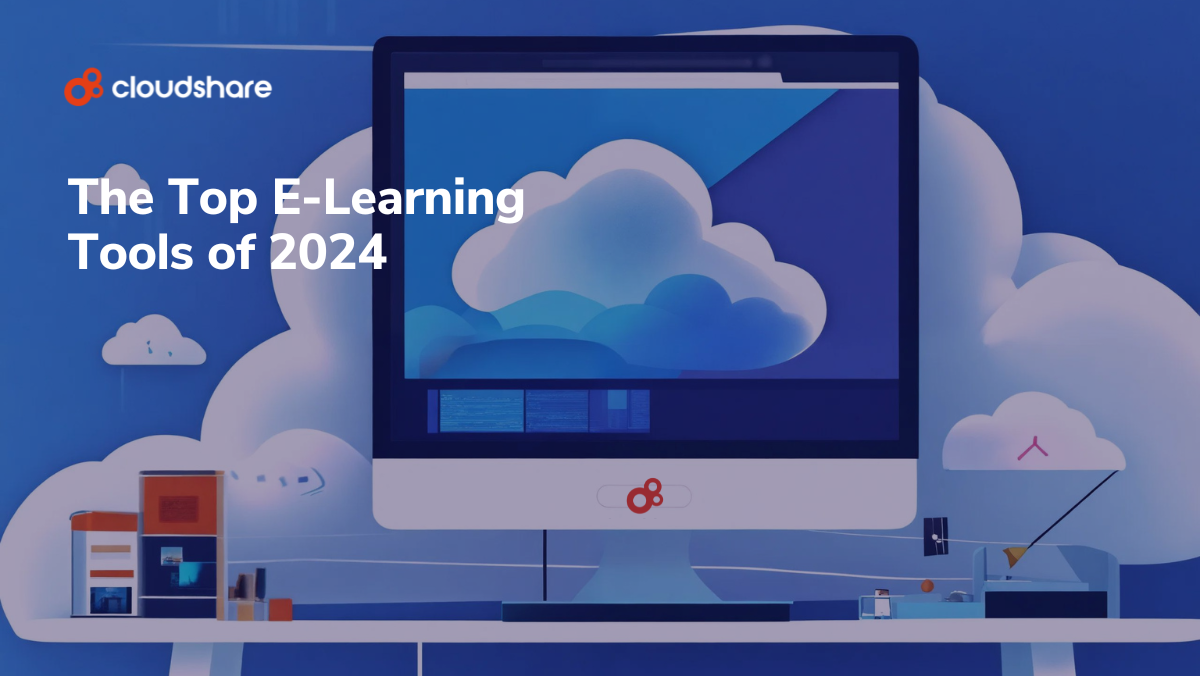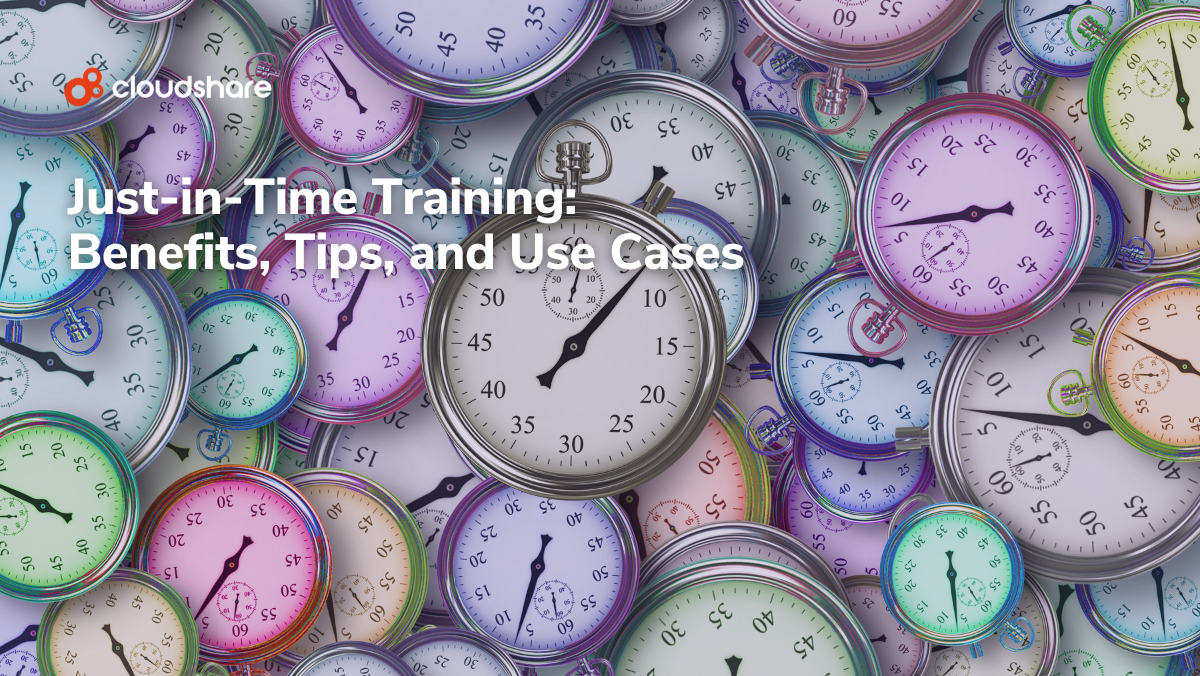
So, you’ve dreamed up a winning strategy for your training program. You know exactly what you need to teach and who you’re looking to teach. But there’s still one thing missing — your toolkit.
Without the right e-learning software, even the best-laid training plans might go to waste. With that in mind, let’s talk about what’s involved in finding e-learning software for your online training program, starting with the kinds of tools you should look for.
Types of Corporate E-Learning Tools
Corporate learning and development tools usually fall under one of the following umbrellas, though there are plenty that cover multiple areas.
Authoring
Authoring software lets you create the materials for your training courses. Authoring tools often come with a wide range of features, including artificial intelligence (AI) integration, pre-built templates, and support for interactive learning. Most modern solutions are designed for ease of use as well, allowing instructors to design — and occasionally even deploy — content without assistance from IT.
Learning Management System (LMS)
A learning management system (LMS) helps you organize and deliver training content. This usually includes managing participants, scheduling courses, and handling busywork such as grading and feedback. As online learning has continued to evolve, many LMS vendors have also incorporated functionality from other types of e-learning systems. These include learning experience platforms (LXP), training management systems (TMS), and content authoring tools.
Learning Experience Platform (LXP)
As the name suggests, a learning experience platform (LXP) makes your training program more engaging and compelling. It applies a user-first design philosophy to your training, usually through a combination of AI-driven personalization, content aggregation, and behavioral analytics. Because the learner experience is such an integral part of modern learning and development, most LMS solutions now include LXP functionality out of the box.
Training Management System (TMS)
A training management system (TMS) supports the commercial side of learning and development, making it easier for your business to deliver content such as certification programs and premium courses. It does a lot of the same stuff as an LMS, albeit with an added focus on administration, logistics, and invoicing. Most TMS solutions also support workflow automation and integration with other tools such as customer relationship management (CRM) platforms.
Communication, Collaboration, and Videoconferencing
Did you know that around 20% of learning happens through social interaction? Not only that, people tend to display better retention and comprehension through social learning. Interaction, as it turns out, is pretty huge no matter what you’re learning.
With that in mind, it shouldn’t come as any surprise that there’s a huge niche for messaging and videoconferencing tools in corporate L&D.
Assessment
Assessment software helps you measure learner performance, usually in the form of quizzes, surveys, or tests. They’re basically a way to help you assess the effectiveness of your training program while also identifying people who are struggling with comprehension. Most e-learning tools include built-in options for assessments, though standalone software also exists.
Interactive Virtual IT Labs
We’ve made no secret of our belief that hands-on learning is way more effective than passive absorption. There are certain things you just can’t learn in the classroom. Plus, people who have a chance to immediately and practically apply their training usually have a way easier time remembering that training.
But what makes virtual IT labs a must-have? Virtual IT labs aim to recreate classroom settings in a virtual environment. Some of their biggest benefits include:
- Creating real-life scenarios: These environments provide students with hands-on experience that also engages critical thinking skills.
- Scaling to your class size: Virtual IT labs are highly scalable, as new environments can always be spun up as needed.
- Measuring the learning experience: Most actions can be tracked within a virtual IT lab. This information can be used to identify where students are struggling, how individual students are learning, and a wide variety of other useful insights.
- Identify the ROI of your training: Virtual IT labs make it easy to measure progress. You can easily see what training is working well, what programs are struggling, and where to deploy additional resources to improve training.
The Best Business Software for E-Learning
Now that we’ve gone over a few of the main types of e-learning solutions, we’re going to wrap things up by showcasing what we feel is the best e-learning tool in each category.
Interactive Learning Software: CloudShare
If you’re looking for a way to support scalable, intuitive hands-on training, look no further than CloudShare’s powerful virtual IT labs. Designed to deliver stunning virtual product experiences CloudShare lets your instructors spin up complex training environments with just a few clicks. With support for pretty much every online training modality you can think of, CloudShare also comes with custom reporting and built-in analytics so it’s easy to measure both learner performance and your training program’s return on investment (ROI).
We’ve also designed CloudShare so that it’s easy to integrate with other e-learning software, with a transparent pricing plan to help you stay on budget.
Authoring: EasyGenerator
EasyGenerator is an AI-powered content authoring tool with an intuitive drag-and-drop interface and a comprehensive library of pre-built templates. It’s both straightforward and flexible, designed to help businesses transform pre-existing training documentation into e-learning courses in just minutes. The solution is built to adhere to Sharable Content Object Reference Model SCORM, meaning it’s also compatible with the majority of LXP and LMS tools.
LMS: Docebo Learn
Like EasyGenerator, one of Docebo’s big selling points is its use of AI. Learn, the company’s award-winning flagship product, is endlessly flexible and configurable, usable for everything from customer education to partner enablement and employee onboarding. A commercial LMS designed for larger organizations, Docebo is capable of scaling up to support training initiatives of virtually any size.
Docebo also provides comprehensive branding options and simple but powerful content publishing tools.
LXP: EdCast
EdCast is a powerful, AI-driven LXP that delivers hyper-personalized adaptive learning alongside content creation, social learning and microlearning functionality. It makes life easier for people on both sides of your training program, with a ton of features designed to help learning and development leaders, managers, instructors, and human resource professionals.
EdCast is also supported by a massive ecosystem that includes a marketplace of pre-made B2B courses and integration with other products in Cornerstone’s diverse portfolio, including learning management, workforce agility, and human resources/payroll.
TMS: SkyPrep
SkyPrep does a little bit of everything. At its core, though, it’s a powerful TMS platform that supports both internal change management and external certification and training programs. Alongside intuitive scheduling, SkyPrep equips your business with content authoring, custom reporting, and AI automation.
Collaborative Learning: Slack
Although Slack isn’t exclusively designed as a learning tool, it’s still one of the most popular collaboration platforms on the market. The software’s user management features, which include custom roles and granular access permissions, make it a great fit for any social learning initiative. Plus, through integration with other e-learning solutions like CloudShare, it can provide things like assistance notifications to instructors.
Assessment: NetExam
The NetExam LMS is designed from the ground up to help businesses improve both their partner ecosystem and customer education efforts. The thing that makes this tool really unique, however, is the Netexam.ai module. In addition to course creation and adaptive learning, Netexam.ai can generate simulations, offer personalized tutoring to learners, perform impact analyses, and create custom assessments and exams.
Choose the Right L&D Model for Your Training
You’ve now got a pretty good idea about how to put together your e-learning toolkit. Next, let’s explore how you might apply that toolkit as part of your training strategy. Check out our blog on The Best Corporate Training Models for Learning and Development to explore some of the most effective techniques.




